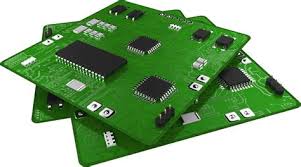Flex PCB & Assembly Explained: The Backbone of Compact Electronics

What is Flex PCB and how is it assembled? This guide covers the structure, benefits, applications, and the essential process of Flex PCB assembly in modern electronics.
What Is a Flex PCB?
A Flex PCB, or Flexible Printed Circuit Board, is exactly what it sounds like: a circuit board that can bend, twist, and fold without breaking. It’s built using flexible insulating materials like polyimide, with copper traces laminated on top.
Unlike rigid PCBs, Flex PCBs are thin, lightweight, and highly adaptable, making them ideal for tight and irregular spaces where traditional boards simply don’t fit.
What Is Flex PCB Assembly?
Flex PCB Assembly is the process of attaching electronic components to flexible circuit boards. Due to the flexible nature of the material, this process requires specialized handling and precise equipment.
Common Flex PCB Assembly Techniques:
- SMT (Surface Mount Technology) for most components
- Manual or selective soldering for complex areas
- Reflow soldering with temperature control to protect the flex layers
- Automated inspection to detect assembly defects
Why Use Flex PCBs?
Here are the main reasons engineers and product designers choose Flex PCBs:
- Save Space
Flex boards fold into tight enclosures, freeing up space in compact devices.
- Lightweight Design
Perfect for wearables, drones, and mobile electronics where every gram counts.
- Withstand Bending and Vibration
They’re more durable in dynamic environments than rigid boards.
- Simplify Assembly
Flex circuits reduce the need for connectors and wiring, cutting down on labor and failure points.
Key Applications of Flex PCBs
You’ll find Flex PCBs in:
- Wearables: fitness trackers, smart rings, AR glasses
- Medical: surgical tools, diagnostic devices, implantables
- Consumer tech: cameras, foldable phones, laptops
- Automotive: sensors, LED lighting, infotainment systems
- Industrial: robotic arms, handheld meters, flexible HMIs
Things to Watch in Flex PCB Assembly
To ensure high-quality Flex PCB assembly, manufacturers must:
- Avoid placing components on bending zones
- Use proper stiffeners to reinforce fragile areas
- Apply exact heat profiles during reflow to prevent delamination
- Handle boards carefully to prevent damage during transport and mounting
Choosing the Right Assembly Partner
Flex PCB production isn’t just about advanced materials—it’s about precision assembly. A reliable assembly partner will provide:
- Full in-house flex PCB manufacturing and assembly
- Cleanroom environment for high-reliability builds
- Experienced engineering support for DFM review
- Certifications such as ISO 9001, IPC-A-610, and RoHS compliance
- Fast prototyping and scalable production
Conclusion
Flex PCBs and Flex PCB assembly are essential in today’s miniaturized and high-performance electronic devices. They’re not only flexible in shape, but also in how they improve design freedom, durability, and efficiency.
If your project needs to go beyond the limits of rigid boards, Flex PCBs are the future-ready solution you’ve been looking for.
Looking to build smarter and smaller? Partner with a manufacturer that specializes in flexible circuit board assembly and turn your idea into a high-quality product that lasts.






